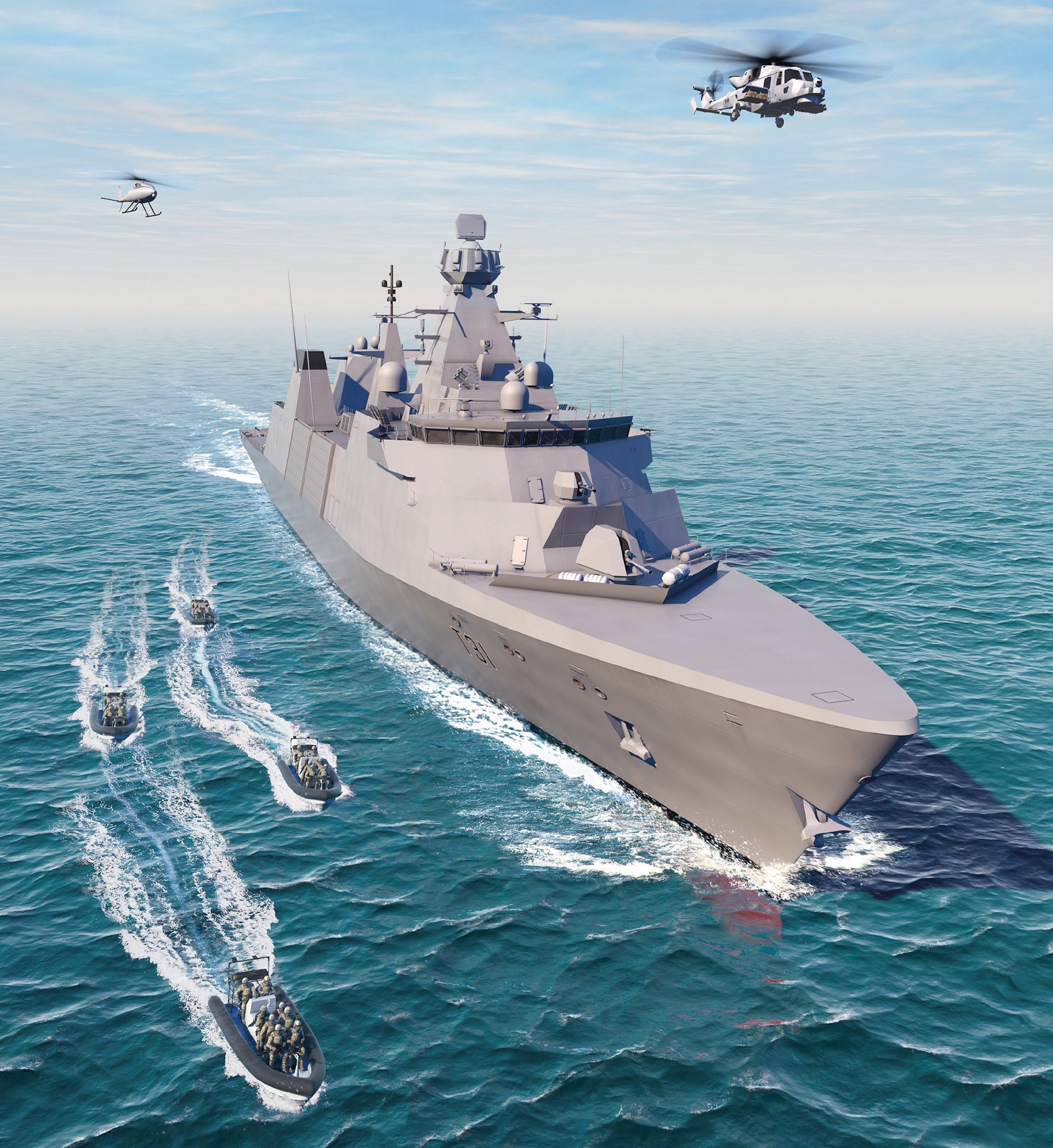
Steel for the U.K. Royal Navy’s first new Type 31 frigate was cut on Sept. 24, raising hopes that the service may secure a larger fleet of frontline warships in the long term.
With the fall in the total number of in-service frigates and destroyers in the Royal Navy, the service is expected to reach a record low of 16 to 17 hulls by the mid-late 2020s. The five Type 31 ‘Inspiration-class’ frigates are part of the drive to push the total back to more than 19.
The first ship, to be named HMS Venturer, is due to launch by 2023, with the next four on a drumbeat of one per year starting in 2024. Deliveries of all five ships are expected to be completed by 2028. Prime contractor Babcock is building the ships at its facility in Rosyth, Scotland.
During the steel cutting event, Second Sea Lord Vice Adm. Nick Hine tweeted optimistically: “They said we couldn’t do it – together with Babcock, conceived as part of the National Shipbuilding Strategy, contracted in 2019, steel cut in 2021 and all 5 delivered in under a decade.”
Given that most defense procurement programs experience some kind of cost increase and schedule delay, the projected timeline may not come to fruition. However, the Type 31 has made good progress in the last two years given the troubled start of the project – it failed its first attempt in July 2018, when no bidders could meet the $336 million unit price.
The Type 31 was conceived in the 2015 Strategic Defence and Security Review (SDSR) once the U.K. Ministry of Defence realized it could not afford to replace all 13 of its Type 23 Duke-class frigates with the new specialist anti-submarine warfare Type 26 City-class. Instead, it split the buy and only ordered eight Type 26 ships, with the five Type 31 designated as general purpose frigates.
The National Shipbuilding Strategy (NSS) that Hine referred to is the U.K. MoD’s attempt to move away from relying on a single naval construction company in BAE Systems. BAE Systems is building the Type 26 and has delivered most of the Royal Navy’s existing inventory, but the increasing cost of the Type 26 and the earlier Type 45 Daring-class destroyer led the MoD to try and diversify the industrial base.
The £1.25 billion contract with Babcock for the Type 31 was awarded in November 2019. The contract still has a unit price of $336 million, but with the more costly equipment requirements removed. The actual price per ship is likely to be much higher.
The company is building the class to its Arrowhead 140 design, which is based on the Royal Danish Navy’s Iver Huitfeldt-class frigate from Odense Maritime Technology. Babcock’s other team members include Harland and Wolff, Ferguson Marine, Thales and BMT – spreading the supply network across the country to meet the NSS demands for increased local industrial content.
But this attempt does present some risk, as a new naval shipbuilder will need to develop experience in the construction of complex vessels like frigates. Babcock has built a large new assembly hall and is capable of housing two Type 31 frigates for a parallel build and assembly activity.
The second ship is due to start construction next year. The names of the next four ships are HMS Active, HMS Bulldog, HMS Campbeltown, HMS Formidable. The Royal Navy hopes its NSS works as intended and the ships are delivered on time.
The pressure on the Royal Navy is growing after the British government’s Integrated Review defense reforms published in March announced that two of the Type 23 frigates will retire from service early. The former HMS Monmouth (F235) had its refit cancelled and the ship was taken out of service in June. The Royal Navy plans to decommission HMS Argyll (F231) in 2023. This reduces the number of ships available to the Royal Navy, as there are still ongoing problems with the availability of the Type 45 destroyers.
To the benefit of the program, the Type 31 Arrowhead 140 design has been selected by the Indonesian Navy to build under license by Jakarta’s state-run shipbuilder PT Pal. It is also being offered as one of the design options for Poland’s Miecznik (Swordfish) frigate program.
More importantly it is likely that Babcock will receive a follow-on order for five new Type 32 frigates that were announced. These ships will host an unmanned replacement for the Royal Navy’s Hunt- and Sandown-class minesweepers and mine countermeasure vessels that will leave service at the end of the decade.
To keep costs low and to sustain the hot production line following the completion of the Type 31, the Type 32 is likely to be a modified design similar to the Type 31. While the U.K. Royal Navy is building toward a larger fleet, it will have to strive to ensure that its frigate programs deliver as planned.





